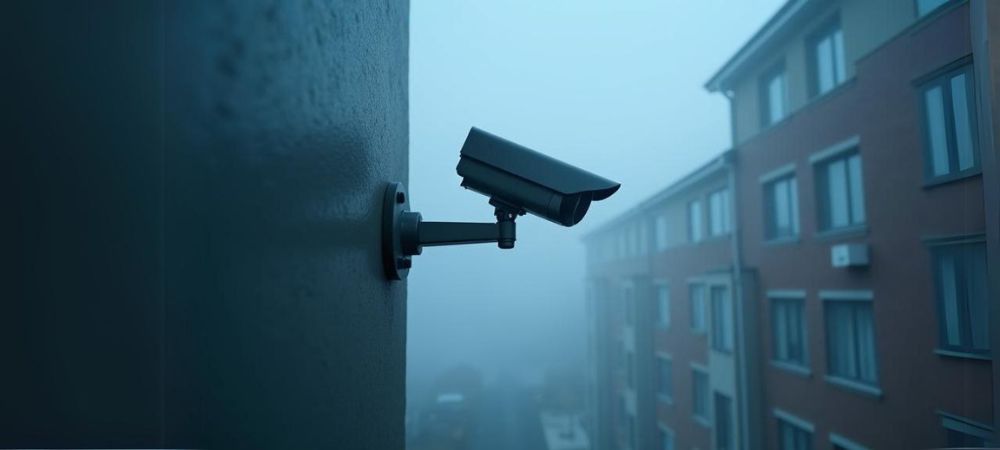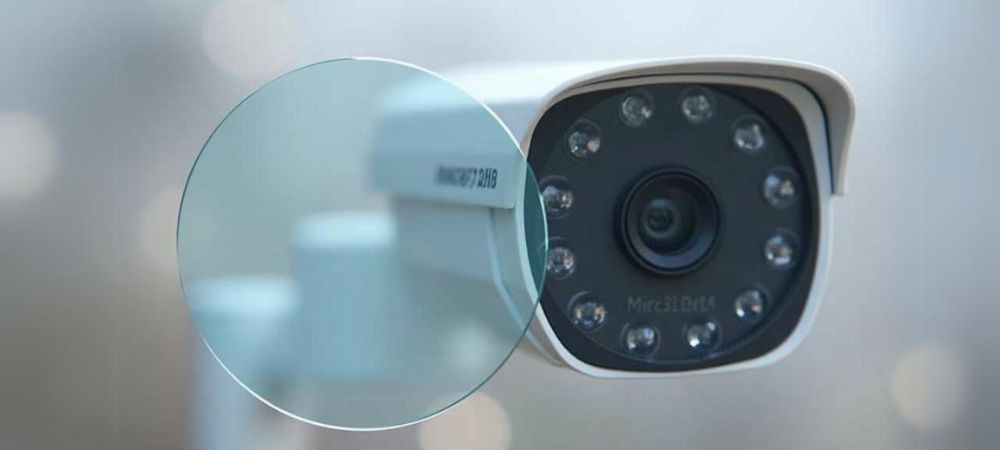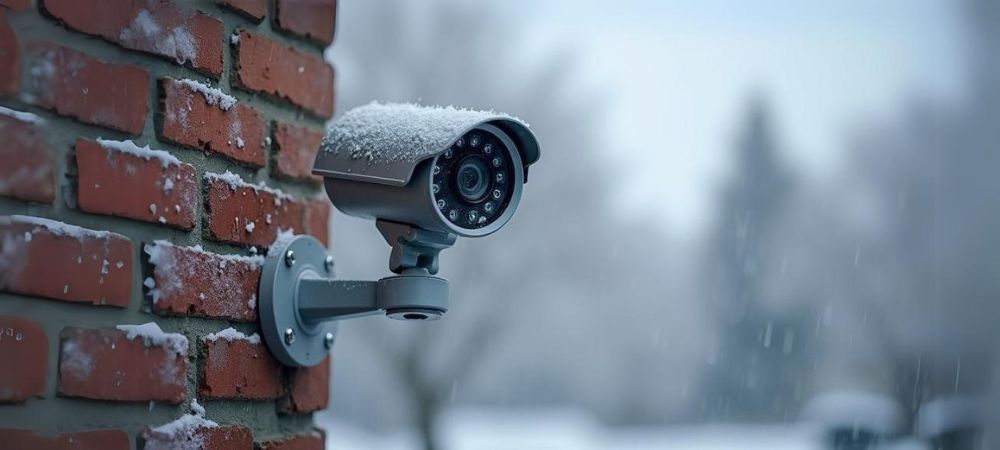How to Prevent Fog on Security Cameras: Clear Footage Tips

In today's world, security cameras are vital for keeping homes and businesses safe. But they are effective only when their footage quality isn't compromised. When fog or condensation builds up on the camera lens, it compromises the quality of the footage, making it challenging to capture the crucial details.
Clear and reliable camera footage is essential for avoiding essential threats or solving a case if encountered. Knowing how to prevent fog on security camera is essential for maintaining reliability. Without proper precaution, moisture can build up on the camera lens, eventually obstructing the view of the footage.
By understanding the causes of fog accumulation and adopting the correct prevention technique, you can keep your cameras fully functional even in harsh conditions.
Causes of fogging on cameras

Fogging on security cameras, particularly installed outdoors, is a common issue caused by environmental factors.
Condensation:
It is a significant factor in security cameras fogging. This occurs when the air around the camera contains moisture, and temperature fluctuation causes the moisture to condense on the camera lens. Typically, condensation will take place when the air is warmer and more humid than the camera's surface, ultimately causing a blurred image. This is most common during early morning or late at night when the temperature shifts.
Extreme weather conditions:
Extreme weather, such as high humidity or a frosty environment, also contributes to fogging on the outdoor rotating security camera. Humid air contains moisture that can accumulate on the lens. Rainwater may leave behind droplet marks after the downpour has ended. In colder climates, frost can build up on the camera overnight, causing the lens to become completely fogged. This eventually causes blurred footage.
Temperature changes:
Rapid changes in temperature, such as those occurring during sunrise or sunset, enhance fogging. The camera lens warms up slowly compared to the air, causing moisture in the atmosphere to condense on the colder surface.
Improper positioning:
Improper placement of security cameras can also lead to such issues. It may be possible that indoor cameras are placed outside, ultimately facing fogging issues as they are not designed to face harsh conditions.
By identifying the causes of fogging and applying a suitable security camera fogging solutions, such as anti-fog treatments or weatherproof shields, you can significantly improve the performance and reliability of your security system in all conditions.
Quick DIY solutions for fogging on the cameras
Wondering how to clear fog from a securitycamera lens? Dealing with fog on your security camera can be frustrating, but plenty of DIY solutions tackle the issue. These methods are simple and effective.
Proper ventilation:
One of the basic solutions is to ensure that your camera housing has proper ventilation. Ventilated housing can help balance the internal and external temperatures, reducing the chance of condensation forming.
Anti-fog films:

Anti-fog films can be applied to the camera lens. These are easily available in the market and can be searched online by security camera fogging solutions. This transparent layer helps reduce fog by preventing moisture from directly settling on the lens.
Sealing gaps:
Another preventive measure can be employed is sealinggapsin the camera housing. This prevents the moisture from seeping inside and causing humidity issues, etc.
Microfiber Cloths:
Another solution that is not handy but very cost-effective is using microfiber cloths for routine maintenance. Regularly wiping the camera lens with a clean microfiber cloth can remove moisture and prevent dirt from building up on the camera lens.
If you are searching for quick security camera fogging solutions that are handy and cost-effective, then- proper ventilation for camera housing, anti-fog films, sealing any gaps, and using microfiber cloths- are an effective way to offer a solution for your problem. Do visit Zetronix if you are in search of the most handy and diverse range of cameras.
Long-term anti-fog solutions:
Several long-term anti-fog solutions for security cameras can help you avoid issues permanently or at least long-term bias.
Anti-fogspray:
One of the easiest methods is applying anti-fogspray to the camera lens. These sprays create a protective layer that minimizes moisture buildup, helping to maintain a clear view. The only issue with this method is that it needs to be applied now and then. It goes a long way fog prevention for CCTV cameras.
Silica gel Packets:
Another method of fog prevention for CCTV cameras is the use of silica gel packets. These moisture-absorbing packets can be placed within the camera's housing to keep the internal environment dry. Silica gel helps prevent condensation that leads to fogging by reducing the amount of moisture around the camera, especially in areas with high humidity.
Weatherproof Housing:

Installing a weatherproof housing or shield is a permanent solution for your cameras whether it is normal or a solar powered security camera. This housing provides an extra layer of protection against snow, rain, and rapid temperature changes. It also enhances the durability of your camera, ensuring its functions and reliability in harsh conditions.
Heated Camera enclosure:
In addition to these methods, you can also use a heated camera enclosure. These housings have built-in heaters that regulate the temperature around the cameras. The temperature is maintained so that condensation is prevented during cold weather. This technique is very fruitful, especially in climates where frost is a frequent problem.
Suppose you are searching for how to clear the fog from a security camera lens? In that case, these long-term solutions- anti-fog sprays, silica gel, heated camera enclosure, and weatherproof housing- offer simple yet effective ways to keep your cameras performing well in all types of weather. If you are searching for a variety of such advanced camera ranges, Zetronix has a plenty of variety to choose from.
Conclusion:
Ensuring clear footage from your security camera is essential for reliable surveillance and safety. Fogging, often caused by weather conditions, condensation, and temperature fluctuations, can reduce the effectiveness of outdoor cameras. Understanding the causes and applying appropriate solutions is the key to maintaining optimal performance.
DIY solutions, including sealing any gaps, adding anti-fog films, proper ventilation of camera housing, and regular cleaning, offer quick and cost-effective solutions to the issue of fog prevention for CCTV cameras. Where-as a long-term solution includes anti-fog sprays, silica gel packets, installing waterproof shields, and using heated camera housing, additional methods to ensure your camera lens remains fog-free.
However, consistent maintenance is crucial. Cameras exposed to harsh conditions or even the standard atmosphere need periodic maintenance and attention to prevent moisture buildup. By staying aware of cameras' performance and function and applying these solutions regularly, you can ensure your security cameras function effectively. This gives you peace of mind that every detail is captured clearly when it matters the most.
For high-quality outdoor security cameras, Zetronix offers a complete variety from solar-powered to outdoor rotating security cameras to choose from. Visit the website now and get your hands on the most reliable security cameras in the market.
FAQ's:
Q. Why does fogging happen on security cameras?
A. Fogging occurs due to condensation when there is a temperature difference between camera lens and surrounding environment.
Q. How can I stop my camera lens from fogging up?
A. To prevent fog, you can use a variety of quick DIY methods like regular cleaning and anti-fog films or long-term solutions such as silica gels or temperature controlled housings.




